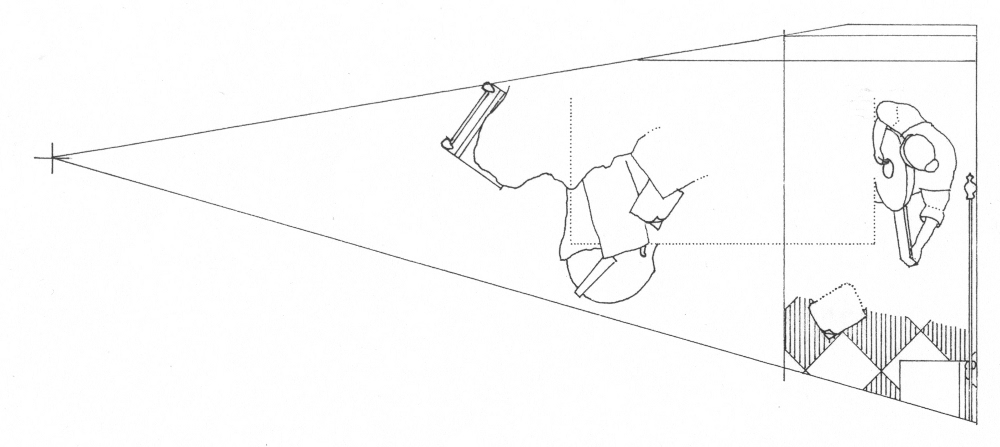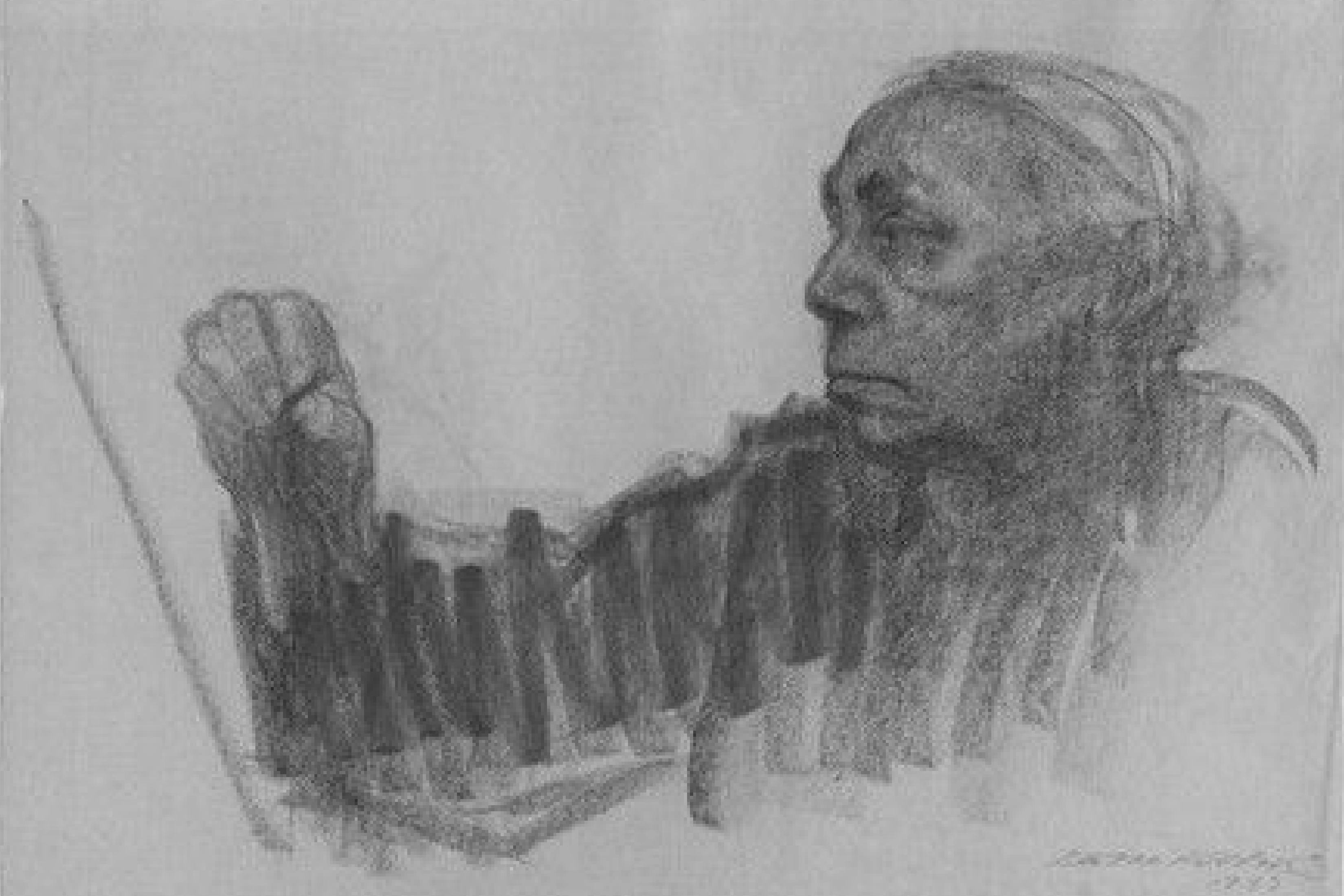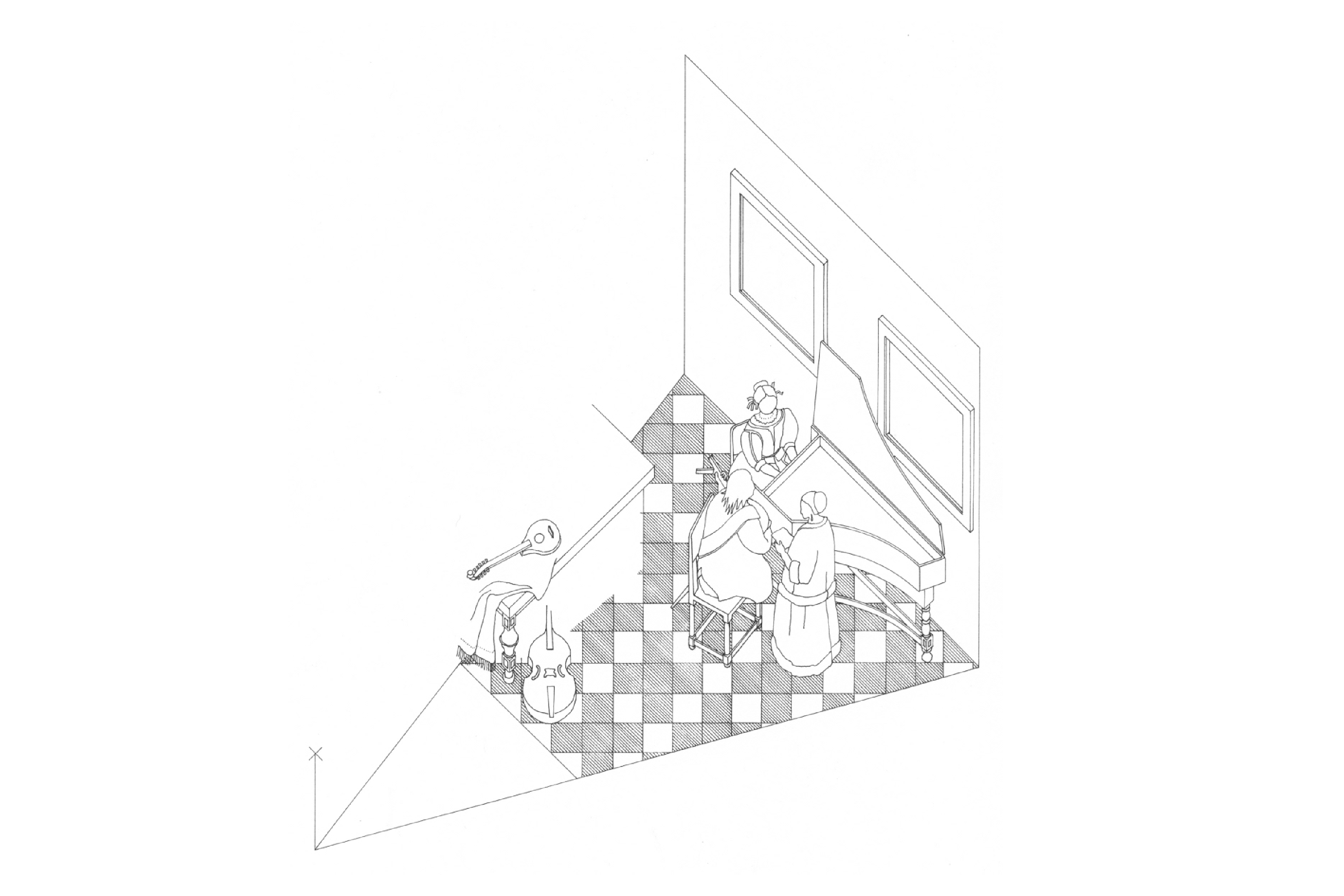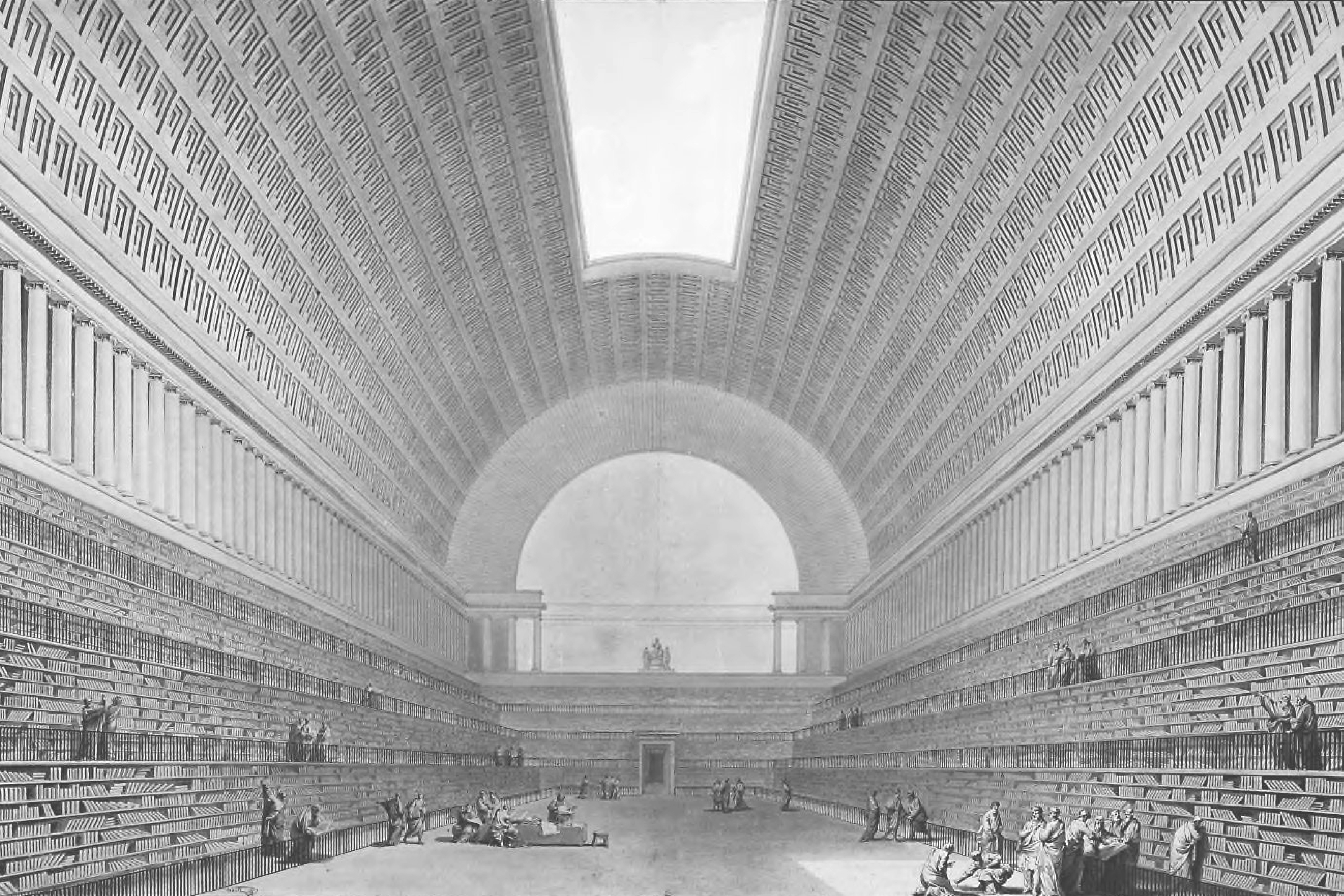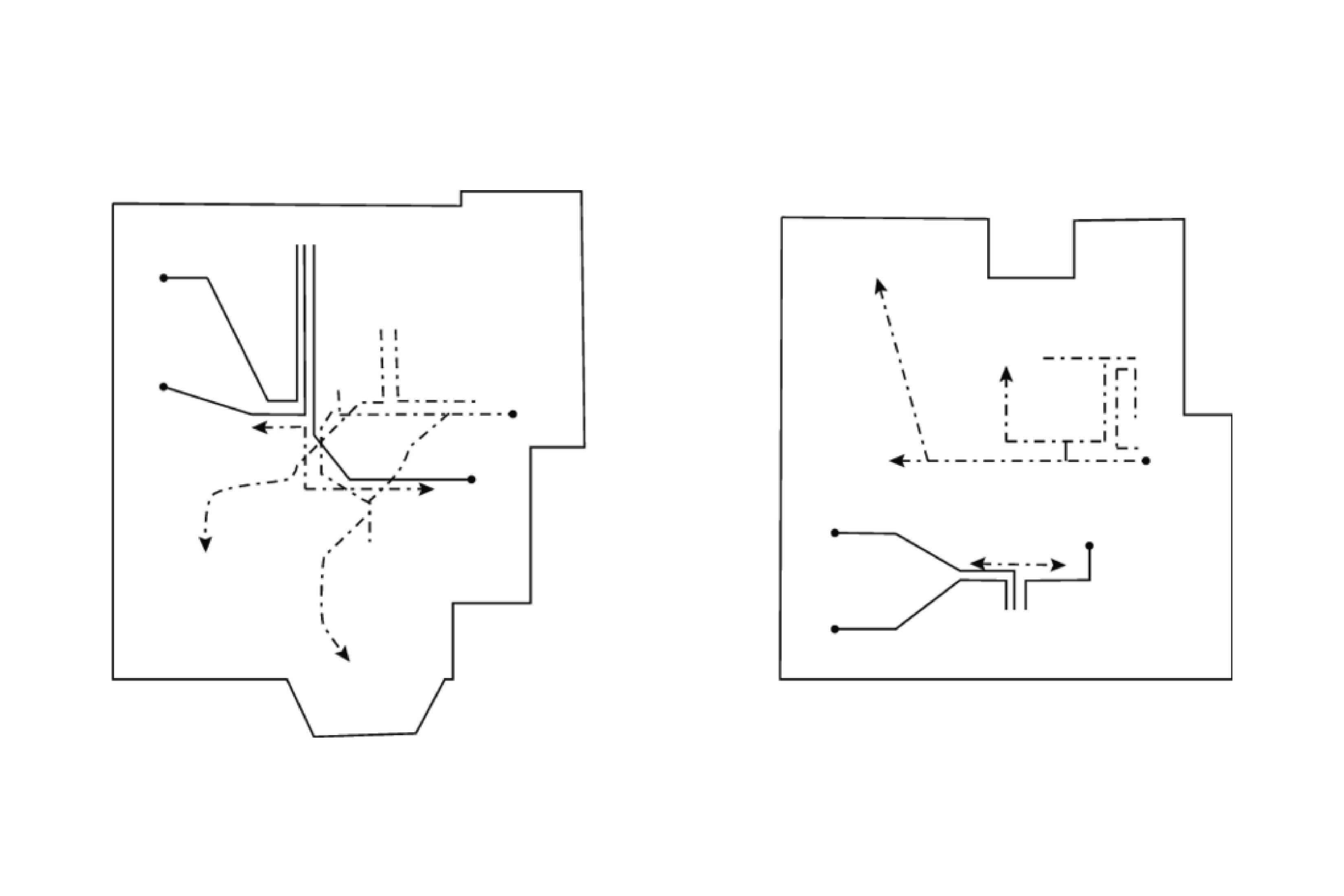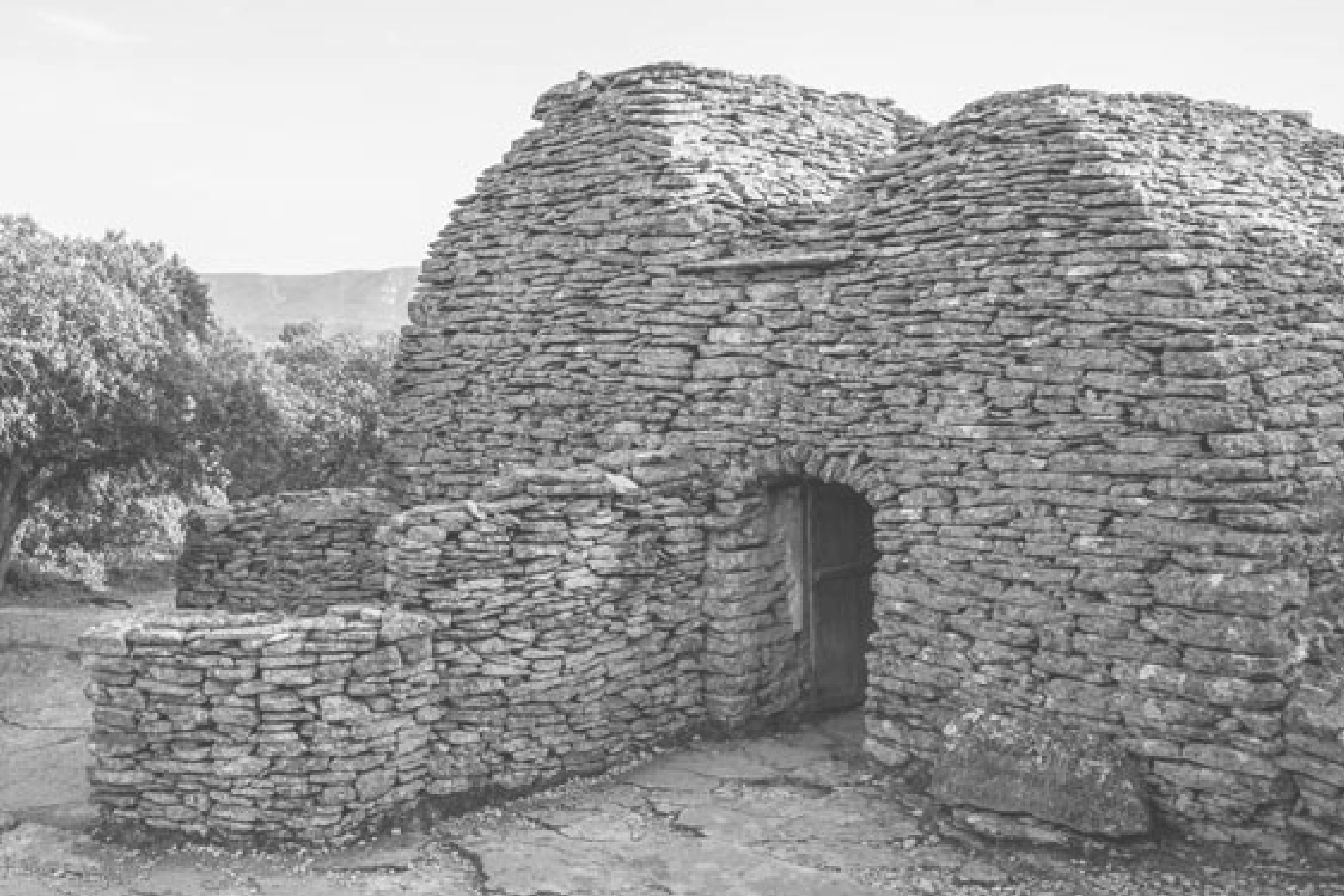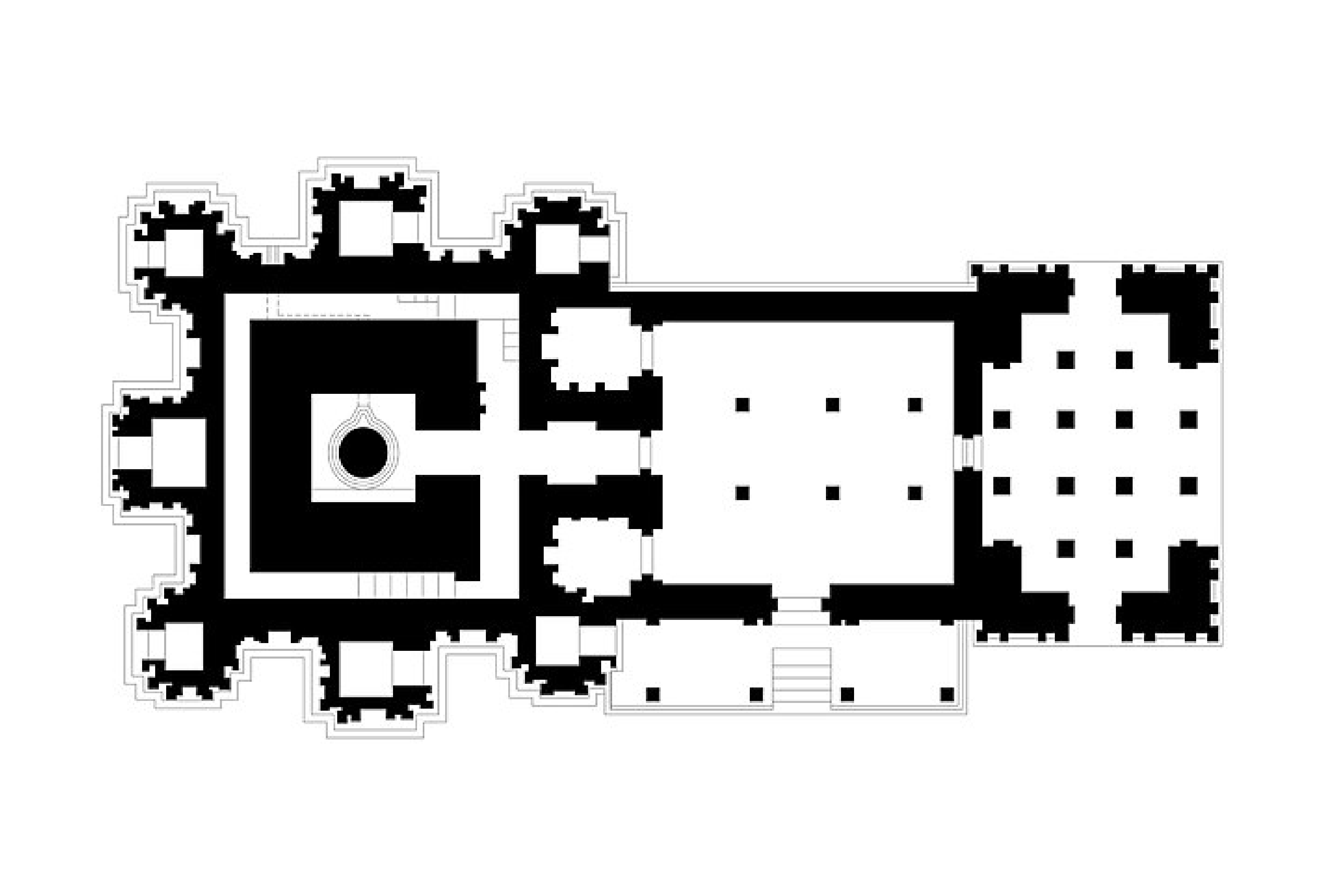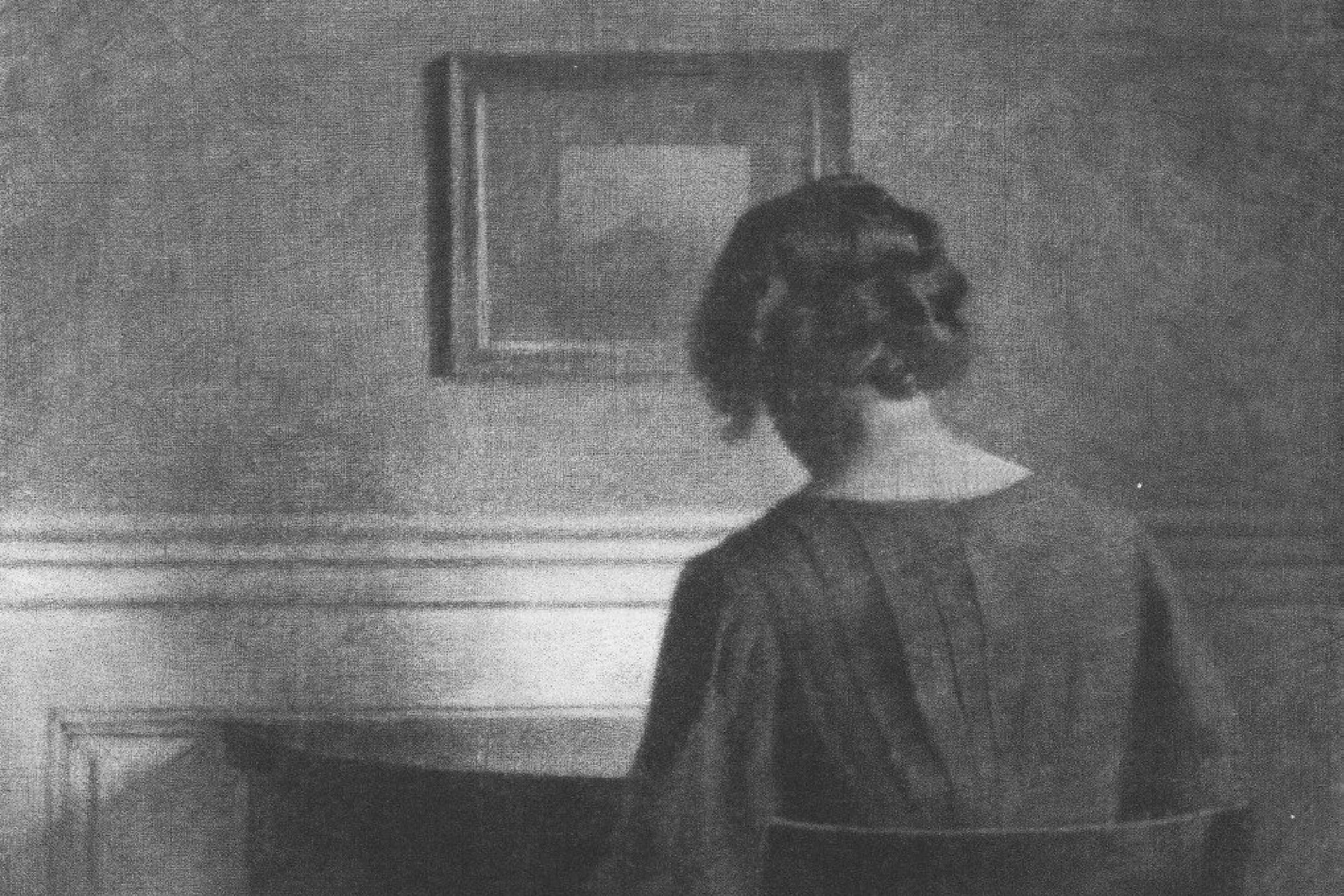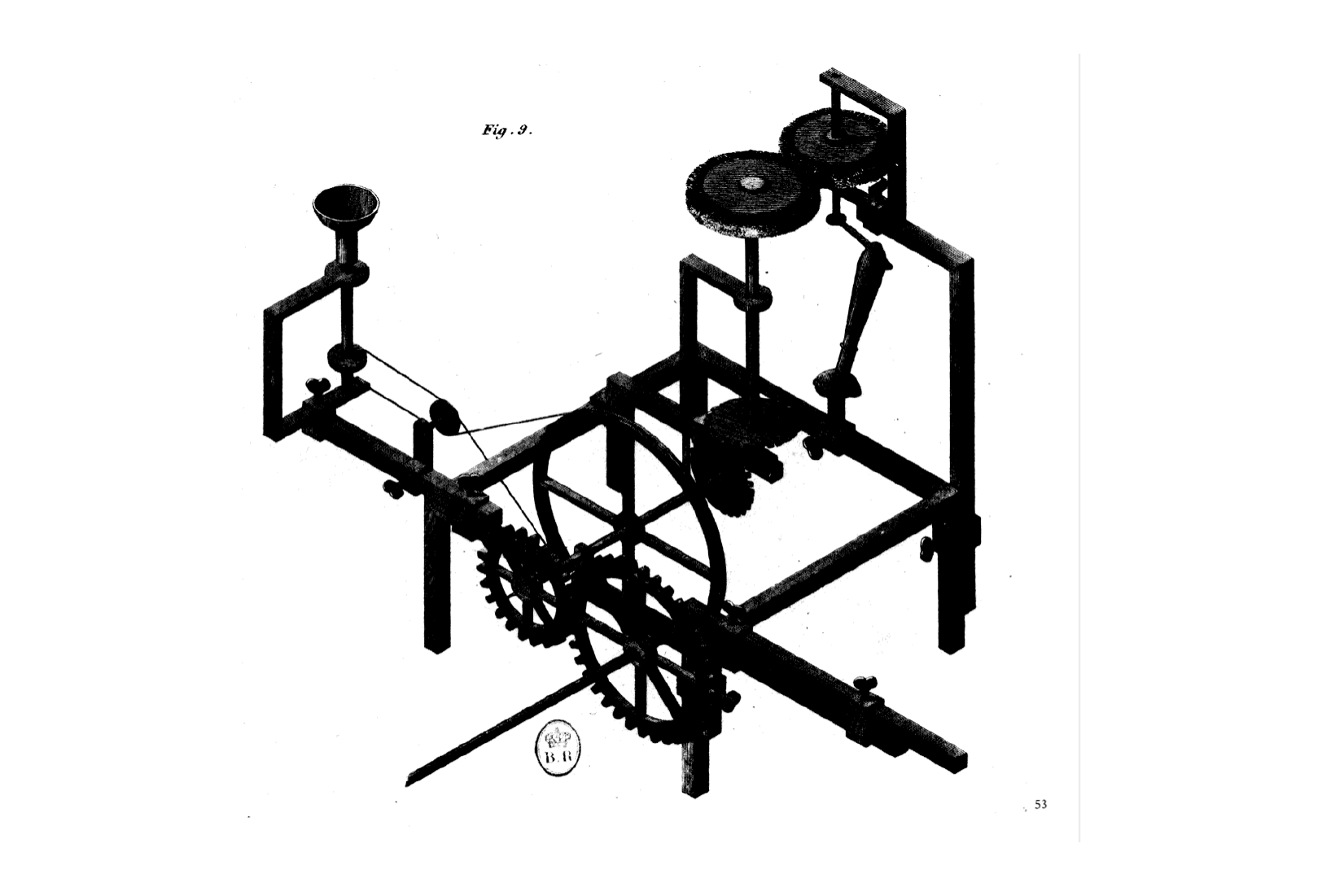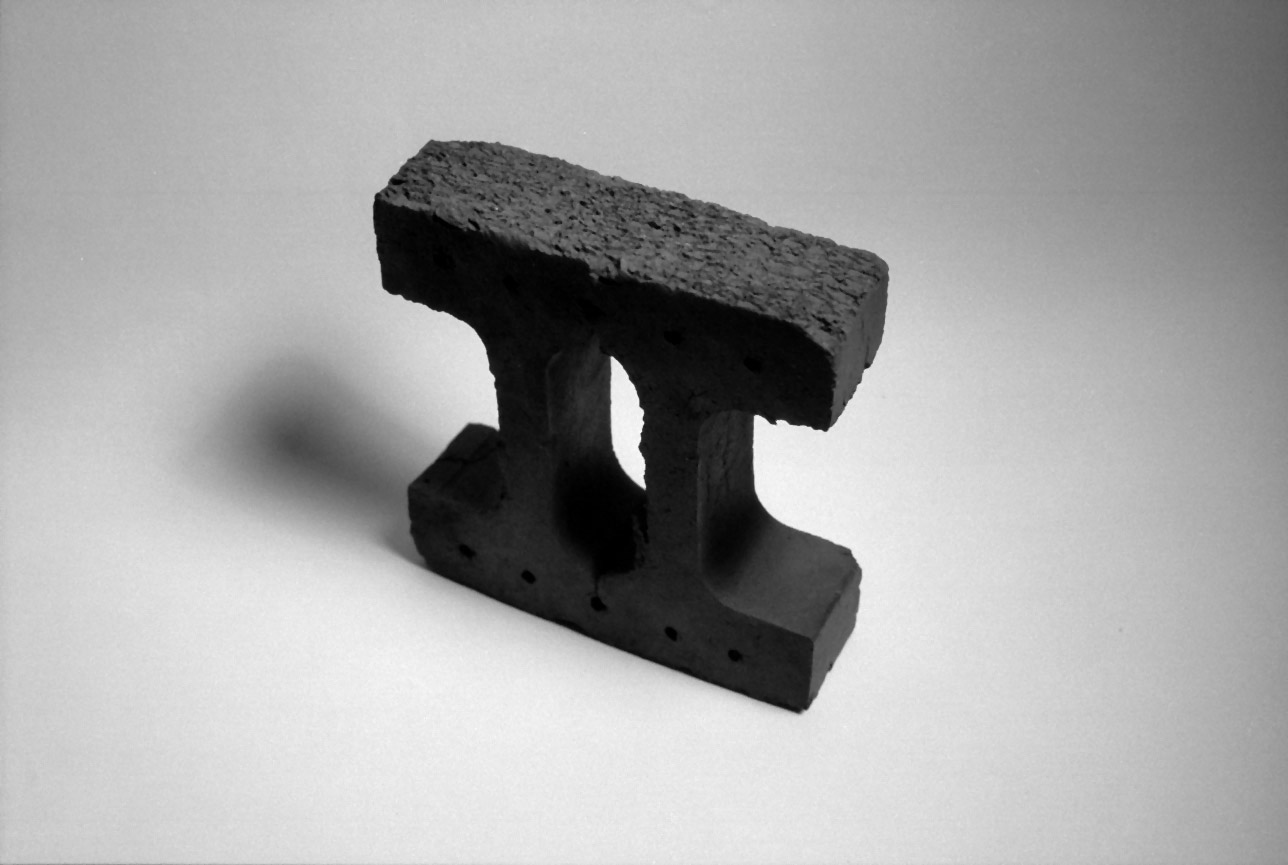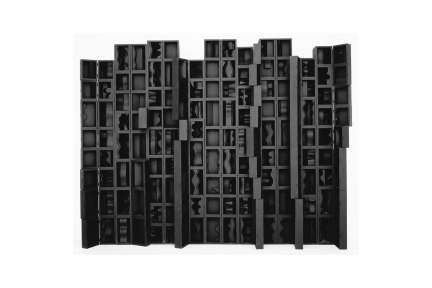Vermeer’s Camera
Philip Steadman, Vermeer's Camera: Uncovering the Truth behind the Masterpieces (2002)
London-based architect Philip Steadman's investigation into Vermeer's use of the camera obscura as a painting tool led him to create scale geometric drawings of spaces and objects present in eleven of Vermeer's domestic interiors (Philip Steadman, Vermeer's Camera: Uncovering the Truth behind the Masterpieces (2002).6 This was achieved using a technique termed "reverse perspective."7 Typically, perspective construction involves translating a three-dimensional scene into a two-dimensional depiction. In reverse perspective, this process is inverted, allowing one to reconstruct a three-dimensional space from a meticulously rendered two-dimensional image, such as those in Vermeer's interiors.
The method is explained in detail in Chapter 5 of Steadman's study, "Reconstructing the Spaces in Vermeer's Paintings."
Below, an "axonometric" bird's eye view, a plan, and a side view are given for a few of Vermeer's interiors created by Steadman. An axonometric is a specialized form of perspective in which the plan preserves its true scale and there is no diminution with distance.
----
Lady Seated at a Virginal, 1670-72


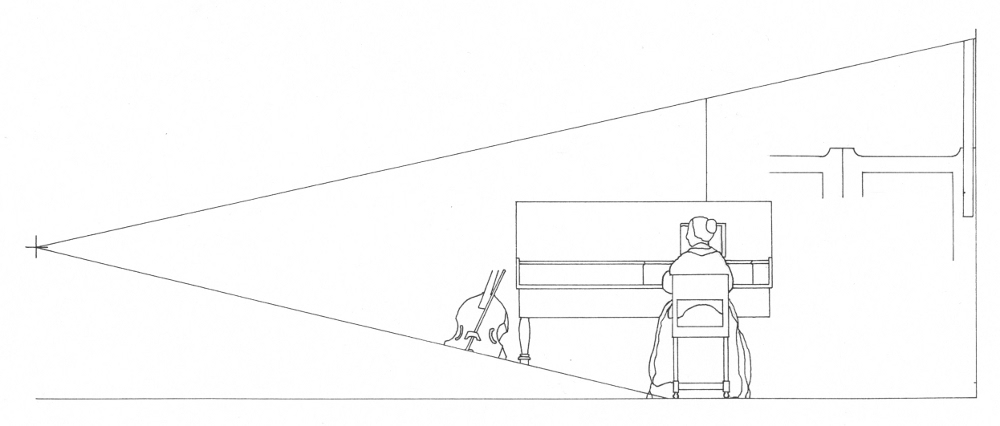

----
Lady Standing at a Virginal , 1670-72

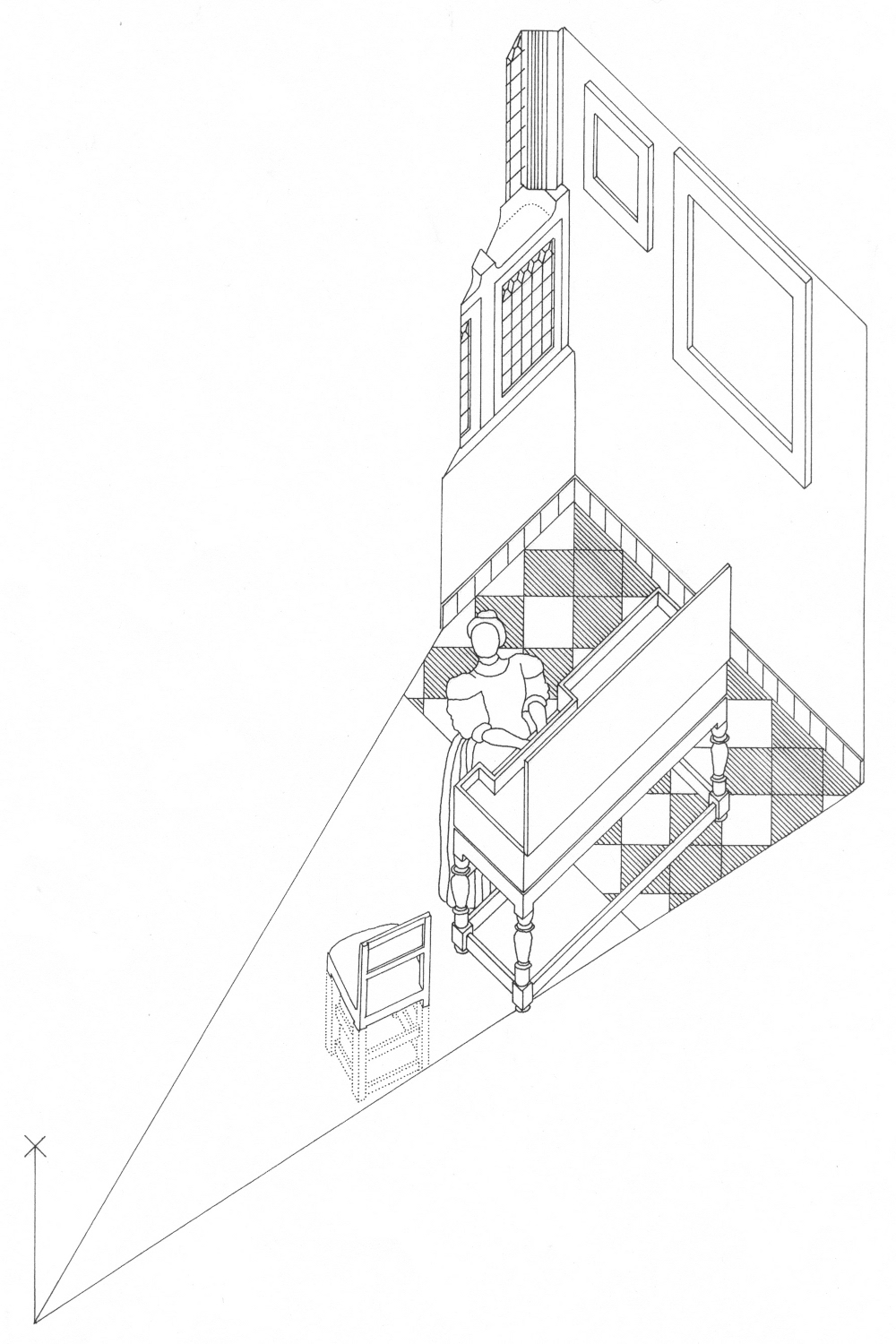


----
Allegory of Faith, 1670-72




----
Lady Writing a Letter with her Maid, 1670-71




----
The Concert, 1664


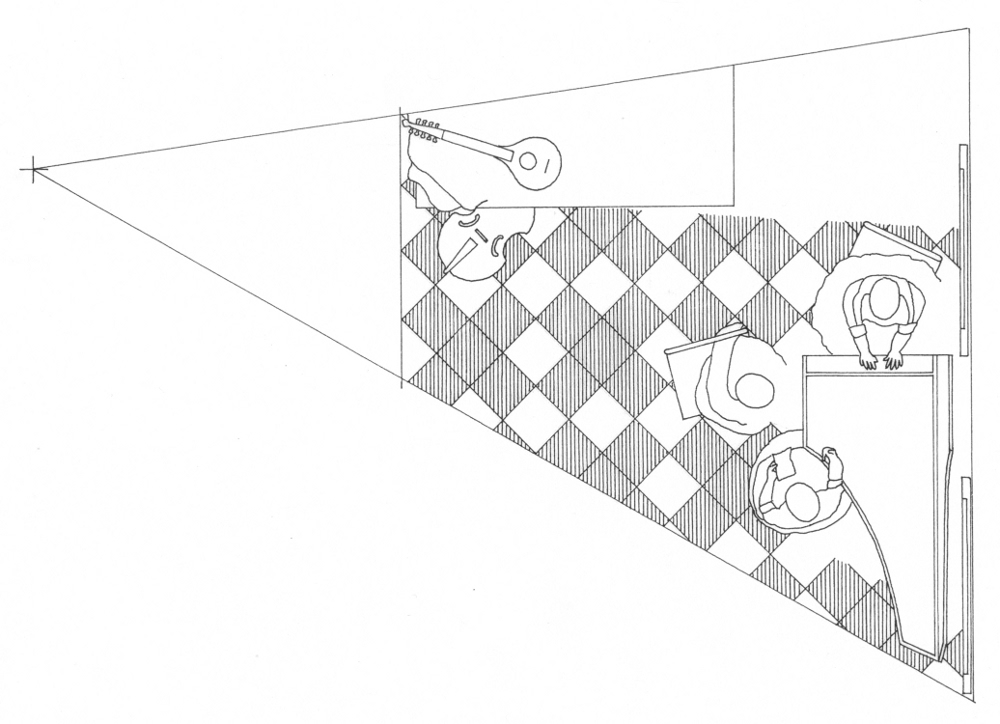
----
The Allegory of Painting, 1666-68




----
The Girl with the Wine Glass, 1659-1660




----
The Music Lesson, 1662-1665




----
Women with a Lute, 1662-63



